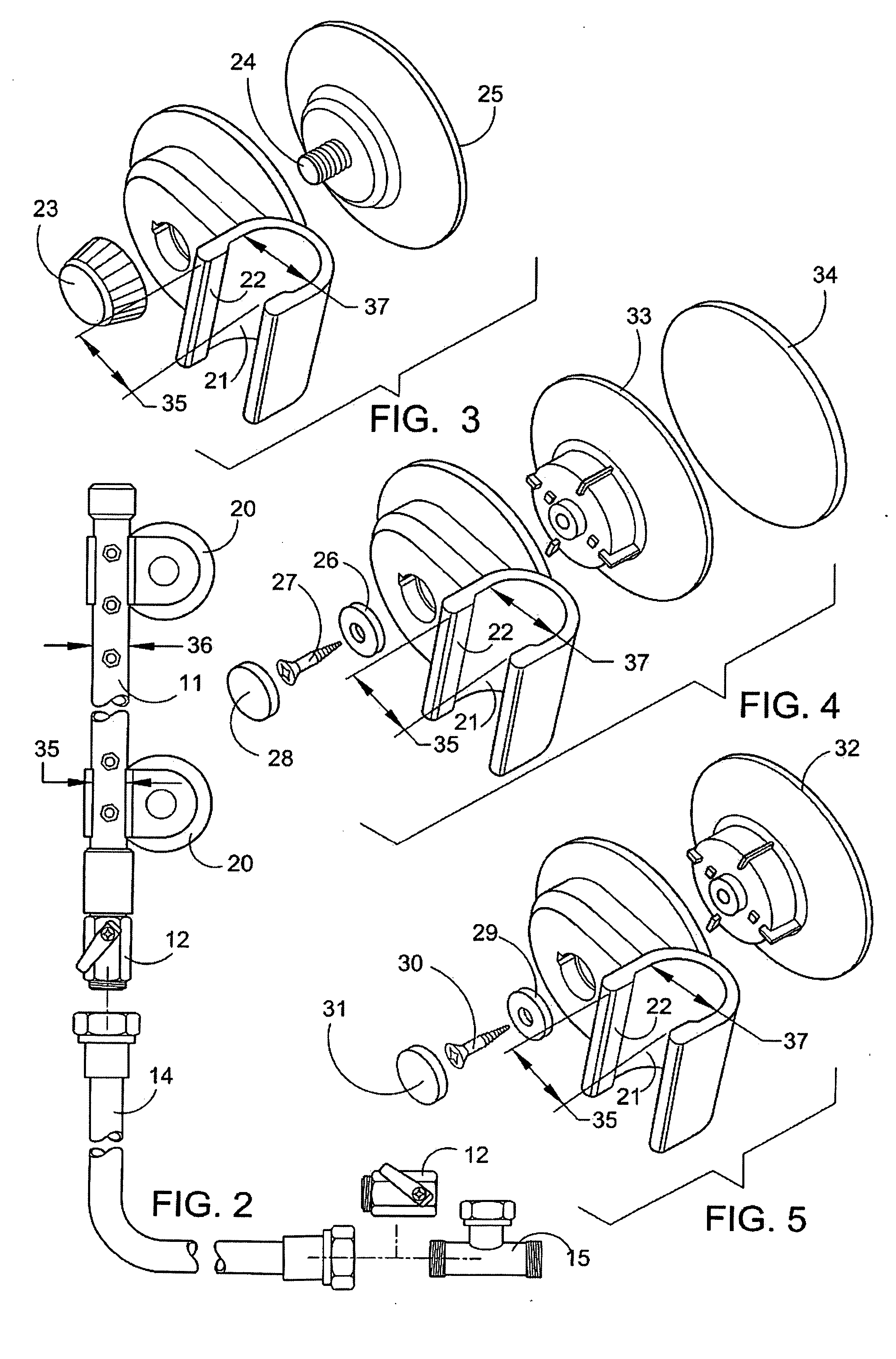Method and assembly for conversion of a standard showerhead to a spray bar
- Summary
- Abstract
- Description
- Claims
- Application Information
AI Technical Summary
Benefits of technology
Problems solved by technology
Method used
Image
Examples
first embodiment
[0032] In a first embodiment, the spa spray bar 11 is mounted on the pre-existing source pipe 18 that extends from the shower wall after removal of the existing showerhead. A standard showerhead 10, such as the one that was previously attached to source pipe 18, is connected through a pipe joint 16 to upper flow control valve 8 to the first outlet of a “T” connector 15. Pipe joint 16 is illustrated as a 90° connection, however, different lengths and angles may be used to achieve the desired orientation for the showerhead 10. Upper flow control valve 8, which is optional, can be adjusted to be fully opened, fully closed or partially open for reduced flow, controls water flow to showerhead 10. For example, if the user wishes to shower without getting his or her hair west, upper flow control valve 8 would be closed, and all of the water would be diverted to spray bar 11. In an alternative embodiment, upper flow control valve 8 can be integrated into the first outlet of “T” connector 15...
second embodiment
[0033] The present invention is also applicable where the main water supply line is other than a pre-existing shower fixture extending from a shower wall. For example, the invention may be utilized with a standard faucet such as in a tub or with an electrically-heated shower unit. As shown in FIG. 2, the second embodiment includes “T” connector 15, which is connected through first flow control valve 8 which is connected to the connector pipe 14, which may be either flexible or solid tubing. Note that first flow control valve 8 is optional and should not be used with electrically-heated shower units. Connector pipe 14 is connected to optional second flow control valve 12, which is connected to the spray bar 11. The spray bar 11 is affixed to a vertical surface, which can be a shower wall, the wall next to a tub, or to the side of the tub, by one or more mounting brackets 20. While vertical orientation may be preferable for use in a shower, the spray bar 11 need not be mounted in a ve...
PUM
 Login to View More
Login to View More Abstract
Description
Claims
Application Information
 Login to View More
Login to View More - R&D
- Intellectual Property
- Life Sciences
- Materials
- Tech Scout
- Unparalleled Data Quality
- Higher Quality Content
- 60% Fewer Hallucinations
Browse by: Latest US Patents, China's latest patents, Technical Efficacy Thesaurus, Application Domain, Technology Topic, Popular Technical Reports.
© 2025 PatSnap. All rights reserved.Legal|Privacy policy|Modern Slavery Act Transparency Statement|Sitemap|About US| Contact US: help@patsnap.com



